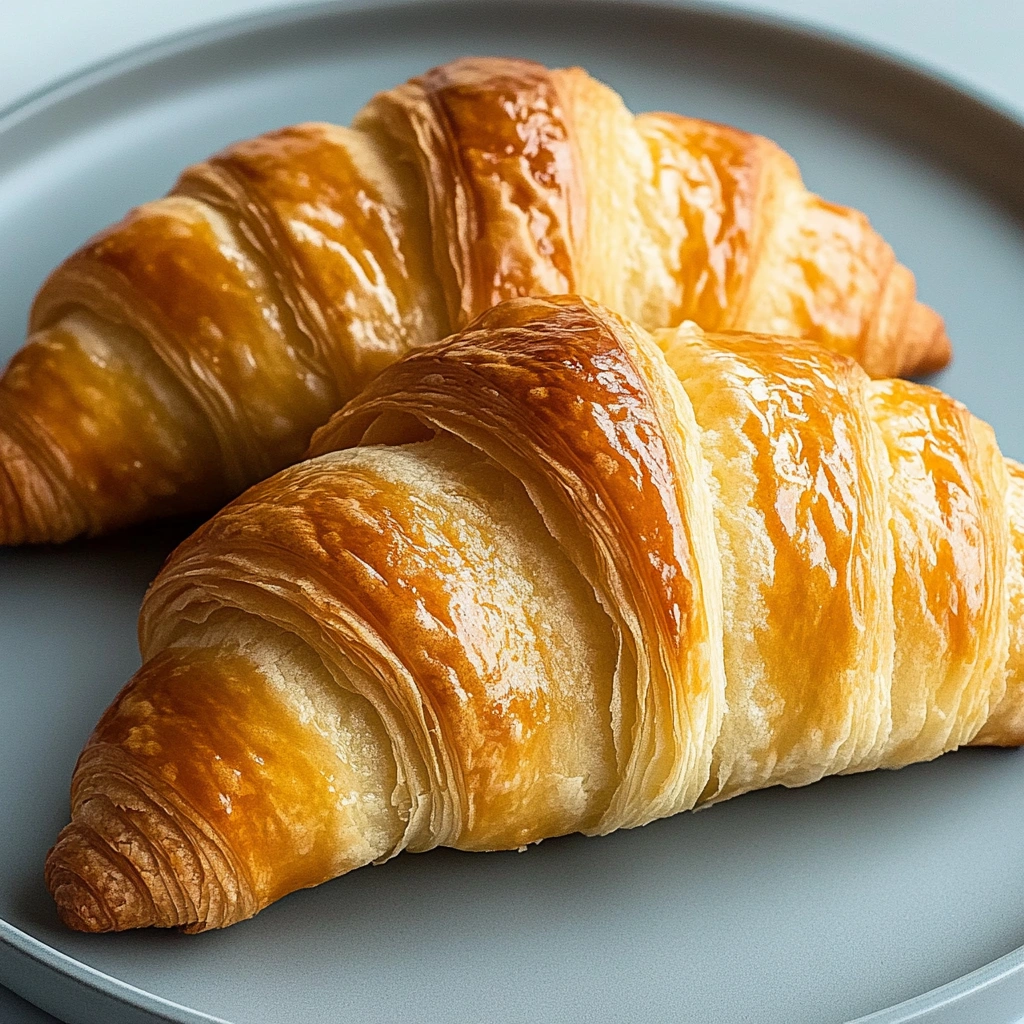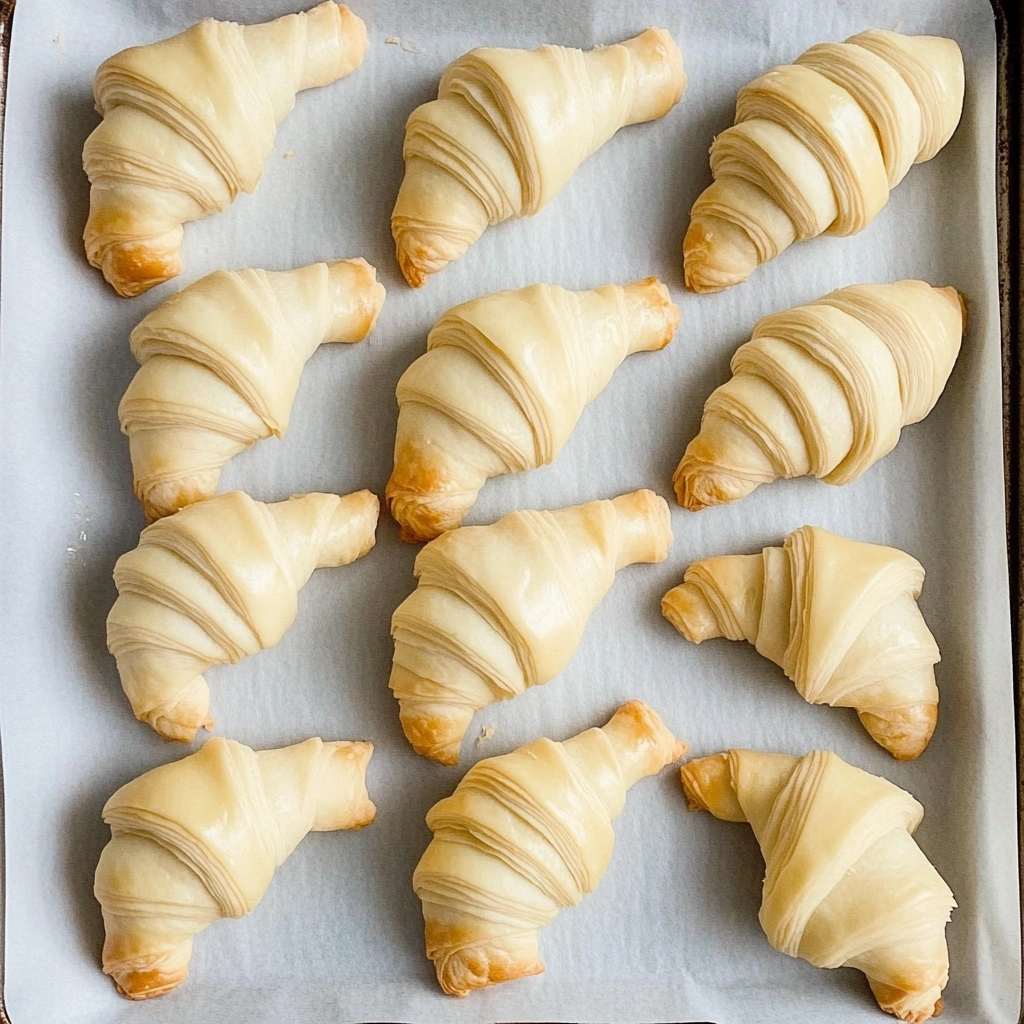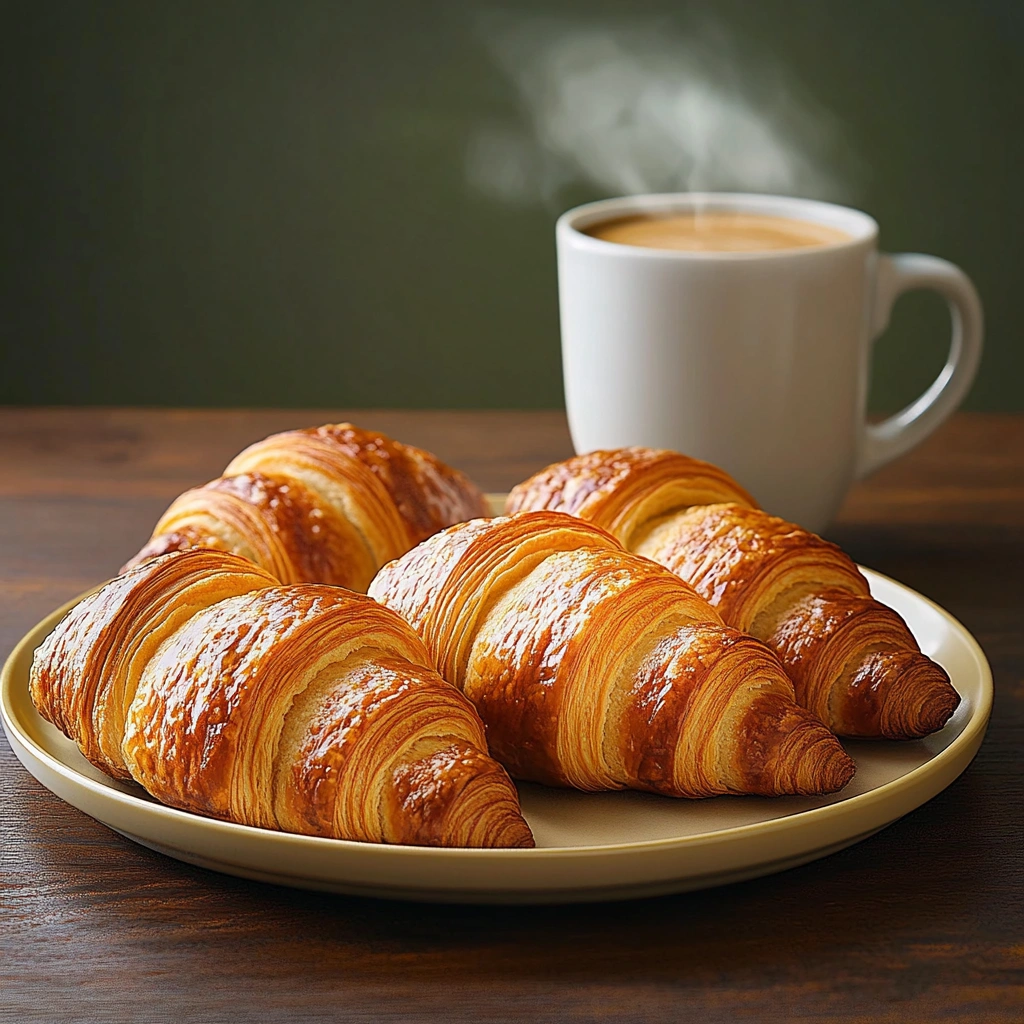What is the difference between a croissant and a Gipfeli? While they may look similar at first glance, these two European pastries have distinct characteristics that set them apart. The croissant, a staple of French baking, is known for its light, buttery, and flaky texture, while the Gipfeli, a popular Swiss pastry, tends to be denser, less buttery, and slightly firmer.
If you’ve ever wondered why a croissant melts in your mouth while a Gipfeli offers a firmer bite, this guide will break down their origins, ingredients, textures, and baking techniques. By the end, you’ll know exactly which one to pick for your next breakfast or coffee break.
Let’s dive into the world of flaky pastries and explore what makes each of these baked goods unique!
If you’re curious about making Gipfeli at home, check out this easy Gipfeli recipe for a delicious homemade version!

Key Ingredients and Preparation
A traditional croissant is made using a laminated dough, a technique that creates hundreds of thin, flaky layers. The essential ingredients include:
| Ingredient | Purpose |
|---|---|
| Flour | Forms the dough structure |
| Butter | Creates flakiness and rich flavor |
| Yeast | Helps the dough rise and adds lightness |
| Milk or Water | Hydrates the dough |
| Sugar | Adds slight sweetness |
| Salt | Balances flavors |
Lamination Process: How Croissants Get Their Flaky Layers
The secret to a croissant’s texture lies in the lamination process:
Finally, it is baked at a high temperature, allowing the butter to steam and create a crispy, golden exterior with an airy interior.
The dough is rolled out and layered with butter.
It is folded multiple times to create thin alternating layers of dough and butter.
After several folds and rolls, the dough is cut into triangles, rolled into a crescent shape, and left to proof before baking.
Key Ingredients and Preparation
A Gipfeli may look similar to a croissant, but its recipe differs significantly, leading to a denser, less flaky texture. Here are the main ingredients:
| Ingredient | Purpose |
|---|---|
| Flour | Provides structure |
| Margarine or Butter | Creates layers but with less richness |
| Yeast or Baking Powder | Helps the dough rise |
| Milk or Water | Hydrates the dough |
| Salt | Balances flavors |
How Gipfeli is Made
The preparation of Gipfeli is simpler than that of a croissant. Here’s the process:
- The dough is mixed and kneaded, but lamination is minimal or absent (meaning fewer layers).
- It is shaped into a crescent, similar to a croissant.
- The dough is proofed for a short time before baking.
- Baked until golden brown, often with a firmer, slightly crisp crust.
Since less butter is folded into the dough, Gipfeli does not develop the same airy, flaky texture as a croissant. Instead, it has a more bread-like, compact consistency.
A Quick History Lesson: Where Did They Come From?
Let’s start with the basics. The croissant is basically France’s pride and joy. (Okay, one of many—they’re kind of known for amazing food, right?) Its buttery, flaky layers are iconic, and it’s a breakfast staple in cafes everywhere.
But here’s the twist: the croissant’s ancestor actually came from Austria. The original version, the kipferl, dates back to the 13th century. It was crescent-shaped and made from a denser, less buttery dough. When Austrian bakers brought it to France in the 19th century, the French gave it a glow-up with laminated dough, and voilà—the croissant we know today was born.
The Gipfeli, on the other hand, is Switzerland’s take on the kipferl. While it shares the same crescent shape as a croissant, it’s more like the low-key, no-fuss cousin in the pastry family. Think of it as something that pairs perfectly with a quiet Swiss breakfast—a bit more reserved but just as satisfying.

Texture: Flaky vs. Firm
Here’s the biggest giveaway: the texture.
- Croissant: Buttery, flaky, and light. A good croissant almost shatters when you bite into it. The layers are thin, airy, and melt-in-your-mouth good. Honestly, it’s a little messy (but totally worth the crumbs all over your shirt).
- Gipfeli: Firmer and denser. It’s less about showing off those dramatic flaky layers and more about having a smooth, consistent bite. It holds its shape better, so no crumb explosion here.
So, if you’re looking for something delicate and indulgent, go croissant. Want a more practical, on-the-go snack? Gipfeli’s got you.
Taste: Butter Bomb vs. Subtle Charm
This is where things get really interesting because the flavor profiles couldn’t be more different.
- Croissant: Buttery, rich, and decadent. You know the feeling when you eat something and immediately think, “Wow, this is why I can never quit carbs”? That’s a croissant.
- Gipfeli: More understated. It’s still delicious, but it doesn’t hit you over the head with butter. There’s usually less fat in the dough, so the flavor is subtler—slightly sweet, but not overwhelming.
Basically, croissants are like that friend who always steals the spotlight, while Gipfeli is the quieter one who grows on you over time.

Appearance: A Subtle Contrast
At first glance, you might think they look the same—crescent-shaped and golden brown. But look closer, and the differences start to pop out.
- Croissant: Croissants are puffier, with clearly defined layers. They often have a slightly shinier surface, thanks to an egg wash.
- Gipfeli: These are smoother and a bit more compact. They don’t puff up as much, and the surface is usually more matte. It’s like a minimalist version of a croissant.
How They’re Made: Laminated Dough vs. Simpler Dough
The process behind these pastries is another big clue.
- Croissant: Croissants are made with laminated dough, which means folding butter into the dough multiple times to create those iconic layers. It’s a labor-intensive process that gives them their light, airy texture.
- Gipfeli: Gipfeli dough skips the whole lamination drama. It’s more straightforward—kind of like making bread dough but with a bit of butter. The result? A denser, more uniform pastry.
When to Eat Them: A Cultural Snapshot
In France, croissants are a morning staple. Picture a Parisian café, a steaming cup of coffee, and a croissant on the side. It’s almost a ritual.
In Switzerland, Gipfeli plays a similar role, but it’s often part of a heartier breakfast. Think of it paired with cheese, cold cuts, or a dollop of jam. It’s not trying to be fancy—it’s just good, solid comfort food.
Croissant vs. Gipfeli: Nutrition Comparison
If you’re keeping an eye on calories, here’s the deal.
- Croissant: Thanks to all that butter, croissants are higher in fat and calories. They’re definitely a treat, not an everyday thing (unless you’re living your best life, in which case, go for it).
- Gipfeli: Lower in fat, so it’s a bit lighter. It’s still not health food, but it’s a more modest indulgence.
Pairing Ideas: What to Eat Them With
- Croissant: Perfect with coffee or a cappuccino. Add a smear of jam or Nutella if you’re feeling extra fancy.
- Gipfeli: Pairs beautifully with Swiss cheese or a slice of ham. It’s more versatile, so you can take it sweet or savory.
FAQs: What Is the Difference Between a Croissant and a Gipfeli?
1. Is a brioche the same as a croissant?
No, brioche and croissants are different types of pastries. While both contain butter and yeast, they have different textures and preparation methods:
| Feature | Brioche | Croissant |
|---|---|---|
| Type of Dough | Enriched dough (eggs, butter, sugar) | Laminated dough (butter layered into dough) |
| Texture | Soft, fluffy, and bread-like | Flaky, crispy, and airy |
| Taste | Slightly sweet and buttery | Rich, buttery, and slightly crispy |
| Preparation | No layering or lamination | Dough is folded to create thin layers |
So, while brioche and croissants are both buttery and delicious, brioche is soft and fluffy like bread, while croissants are flaky and crisp.
2. What is Gipfeli?
Gipfeli is the Swiss version of a croissant, but it has less butter and a denser texture. Unlike traditional French croissants, Gipfeli is not as flaky and has a slightly firmer, bread-like consistency. It is a staple in Swiss bakeries, often eaten for breakfast with coffee or jam.
3. What’s the difference between croissants and sourdough croissants?
The difference lies in the fermentation process:
| Feature | Traditional Croissant | Sourdough Croissant |
|---|---|---|
| Leavening Agent | Commercial yeast | Natural sourdough starter |
| Flavor | Mild, buttery taste | Slight tangy, complex flavor |
| Texture | Flaky and light | Slightly chewier with more structure |
| Fermentation Time | Short (a few hours) | Long (up to 24-48 hours) |
Sourdough croissants have a more pronounced depth of flavor because of the slow fermentation, making them slightly chewier and more complex in taste than traditional croissants.
4. What are the two types of croissants?
There are two main types of croissants:
- Croissant au Beurre (Butter Croissant): Made with pure butter, giving it a rich, flaky texture and deep flavor.
- Croissant Ordinaire (Margarine Croissant): Made with margarine instead of butter, making it less rich and often used in mass production.
Butter croissants are the gold standard in French bakeries, while margarine croissants are often found in supermarkets or large bakeries due to their lower cost and longer shelf life.
Conclusion
When it comes down to it, the croissant and Gipfeli are like siblings with different personalities. The croissant, with its rich butteriness and delicate flakiness, is the life of the party—luxurious and a little indulgent. The Gipfeli, meanwhile, is humble and dependable, offering a more subtle sweetness and a texture that’s perfect for pairing with hearty toppings.
The beauty of these pastries lies in their differences, which reflect their cultural roots. A croissant can whisk you away to a charming Parisian café, while a Gipfeli feels right at home on a Swiss breakfast table, surrounded by simple, comforting flavors.
So, the next time you’re deciding between the two, let your mood guide you. What is the difference between a croissant and a Gipfeli? Feeling fancy? Grab a croissant. Want something chill and versatile? Go for the Gipfeli. Either way, you’re in for a treat—because, let’s be real, there’s no wrong choice when it comes to flaky, doughy goodness.
And hey, why not have both? Life’s too short to settle for just one pastry.
